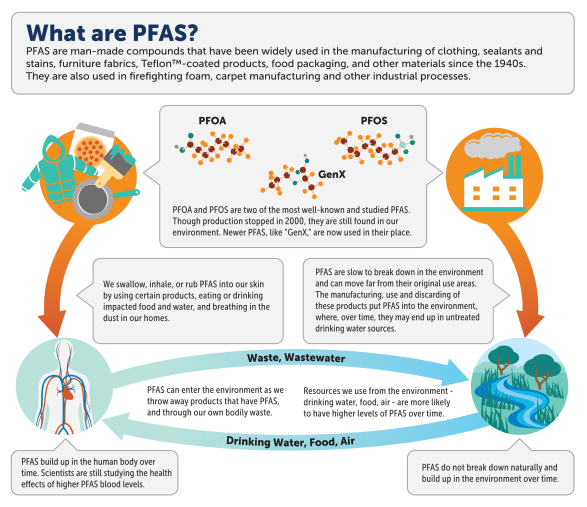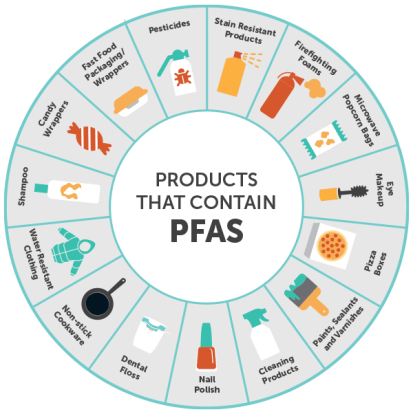Information about PFAS and Hillsborough County’s drinking water
Hillsborough County’s per- and polyfluoroalkyl drinking water monitoring
Per- and polyfluoroalkyl substances (PFAS) are human-made chemical compounds that have been used in products since the 1940s. PFAS have been widely used in items such as clothing, furniture fabrics, food packaging, carpets, and firefighting foam. PFAS generally break down very slowly over time and are often referred to as "forever chemicals.” Because of their widespread use, these chemicals accumulate in the environment, including in drinking water sources.

Hillsborough County utility’s testing for PFAS
Hillsborough County Utilities participated in a nationwide study during 2023-2024 under the U.S. Environmental Protection Agency’s (EPA) 5th Unregulated Contaminant Monitoring Rule. This study included monitoring for 29 PFAS chemicals at multiple Hillsborough County drinking water systems. A summary of this monitoring with regard to new EPA MCLs is available here. The laboratory results of this monitoring are available at HCFL.gov/UCMR.
PFAS next steps
In April 2024, the EPA issued the first ever national regulations limiting PFAS chemicals in drinking water. These regulations include individual maximum contaminant levels for five PFAS chemicals, including PFOS, PFOA, PFHxS, PFNA, and HFPO-DA. The EPA has set time limits for utilities throughout the U.S. to comply with these new standards. In the next few years, Hillsborough County will be conducting additional drinking water testing for PFAS and working with our regional water partners to ensure full compliance with EPA’s new requirements.
Common PFAS containing products

FAQs
Are PFAS regulated?
In April 2024, EPA issued regulations to limit PFAS in drinking water. The regulation sets limits of 4 parts per trillion (ppt) for PFOA and PFOS and 10 ppt for PFNA, PFHxS and HFPO-DA Chemicals. EPA is also setting a limit for any mixture of two or more of the following PFAS: PFNA, PFHxS, PFBS, and HFPO-DA Chemicals.
Public water systems will complete initial monitoring for these PFAS by the end of 2027, followed by ongoing compliance monitoring. By April, 2029, public water systems will be required to meet EPA's new PFAS drinking water limits.
How can PFAS get into drinking water?
PFAS do not originate in drinking water. PFAS are slow to break down in the environment and can move far from their original use areas. The manufacturing, use, and discarding of these products put PFAS into the environment, where, over time, they may end up in drinking water sources.
More information
More information can be found at the US EPA, Tampa Bay Water, and Florida Department of Health sites below:
- US EPA Understanding PFAS Risks
- US EPA PFAS Drinking Water Rule FAQs
- Tampa Bay Water PFAS Information
- Florida Department of Health PFAS Facts
Contact
Ask a question or reach out with a concern. We are always available to talk about how Hillsborough County produces and delivers your drinking water and the steps the County takes to maintain quality. Please contact us at (813) 246-3146.

